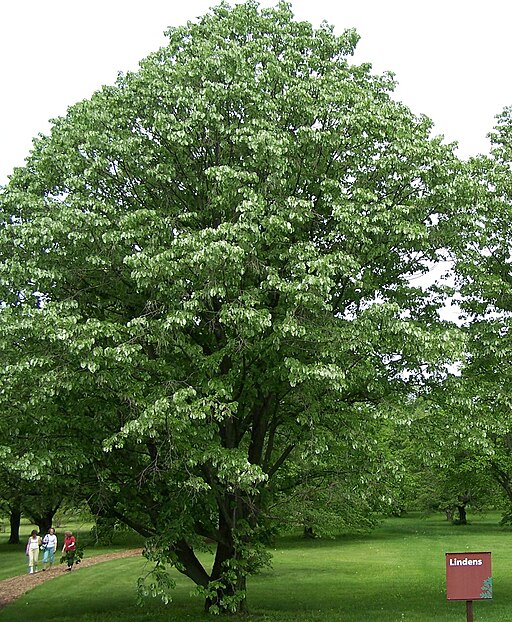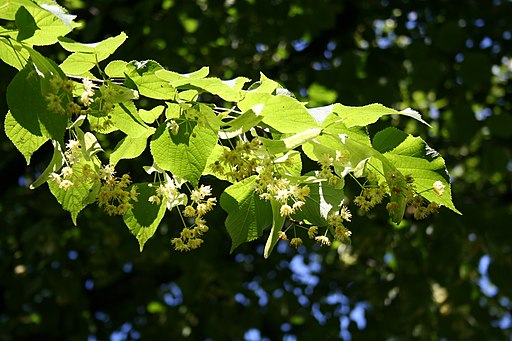Timberpedia - Lime
Lime
| Latin Name: | Irish Name: | Native to Ireland? |
|---|---|---|
| Tilia | No |
About the Tree
Lime has been in Ireland since the Norman Invasion, but interest really increased when Louis XIV
of France opened the gardens at Versailles in the late 17th century, prompting a huge demand for
lime-fringed avenues, generally using seeds grown at nurseries in Flanders.
By the time Lisnavagh was built, these stately and sweet-scented trees were all the rage with
Victorian landscapers and the Lime Walk dates to the 1840s. The ivory-coloured heart-shaped
leaves and smooth grey bark make it a particularly attractive tree, while its timber is used in the
construction of, amongst other uses, piano keys and beehives. (Turtle Bunbury)
About the Wood
Its white, finely-grained wood is excellent for carving, was the wood of choice for legendy woodcarvings by Grinling Gibbons (St Paul’s Cathedral London).
Very popular for mouldings and picture frames as its softness allows it to be pressed rather than carved.
Also known as Basewood.
Because it does not warp, lime wood is still used for the sounding boards and keys of pianos and
organs. As it is free from taint it is used for dairy and domestic utensils. It is the preferred wood for
beehive frames. Other uses are for small turned items, toys, bobbins and sometimes plywood
Know your wood! The Timberpedia is a broad resource that aims to catalogue all the major tree species in Ireland, containing information that we’ve gathered from over two decades maintaining our natural woodland and serving Ireland’s woodworking industry.
All written material is copyright © 2021 by the Lisnavagh Timber Project.
Timberpedia
- Acacia
- Alder (Common)
- Apple
- Apple (Crab)
- Apple (Japanese Crab)
- Ash
- Aspen (Trembling Poplar)
- Beech
- Beech (Copper)
- Beech (Southern)
- Birch
- Box
- Cedar (Western Red)
- Cedar of Lebanon
- Cherry (Bird)
- Cherry (Wild) / Gean
- Chestnut (Horse)
- Chestnut (Sweet / Spanish)
- Cypress (Lawson)
- Cypress (Monterey)
- Elm (English)
- Elm (Wych)
- Eucalyptus
- Fir (Douglas)
- Fir (Grand/Giant)
- Fir (Noble)
- Fir (Silver/European)
- Hawthorn
- Hazel
- Holly
- Hornbeam
- Ivy
- Laburnum
- Larch (European)
- Larch (Japanese)
- Larch (Red)
- Laurel
- Lime
- Maidenhair Tree
- Maple (Field)
- Maple (Norway)
- Mimosa / Silver Wattle
- Monkey-Puzzle
- Musk (Olearia)
- Oak (Cork)
- Oak (Holm / Holly / Evergreen)
- Oak (Pedunculate / English)
- Oak (Red)
- Oak (Sessile / Irish)
- Oak (Turkey)
- Pear
- Pine
- Pine (Scots)
- Plane (London / Lacewood)
- Poplar (Black Cottonwood / Western Balsam)
- Poplar (Grey)
- Rowan (Mountain Ash)
- Spruce (Norway)
- Spruce (Sitka)
- Sycamore
- Tulip Tree
- Walnut (Black)
- Walnut (Common)
- Wellingtonia
- Western Hemlock
- Whitebeam
- Wild Service Tree
- Willow
- Willow (Bay)
- Willow (Crack)
- Willow (Cricket Bat)
- Willow (Goat / Sallow)
- Willow (White / Silver)
- Yew (English)
- Yew (Irish)




